Discover 11 hidden attractions, cool sights, and unusual things to do in Harrogate (United Kingdom). Don't miss out on these must-see attractions: Royal Pump Room, RHS Garden Harlow Carr, and Ripley Castle. Also, be sure to include Harrogate Theatre in your itinerary.
Below, you can find the list of the most amazing places you should visit in Harrogate (England).
Table of Contents
Royal Pump Room

Museum in Harrogate, England. The Royal Pump Room is a Grade II* listed building in Harrogate, North Yorkshire, England. Today it houses the town's museum – operated by Harrogate Borough Council. It was formerly a spa water pump house. It is located in Crown Place in the western part of Harrogate town centre, opposite the town's Valley Gardens park. It is bounded by two streets, Crescent Road and Royal Parade. Today, the Pump Room consists of both the original 1842 stone rotunda and a glazed annexe which was opened in 1913. The Pump Room offered guests of the town an all weather facility where they could drink sulphur water which was pumped on site from a natural spring known as the Old Sulphur Well. The building also had a social element to it as it provided guests with a place to meet friends and get to know others.[1]
Address: Crown Place, HG1 2RY Harrogate
RHS Garden Harlow Carr

Garden in England. RHS Garden Harlow Carr is one of five public gardens run by the Royal Horticultural Society. It is located on the western edge of Harrogate in the English county of North Yorkshire.
The RHS acquired Harlow Carr through its merger with the Northern Horticultural Society in 2001. It had been the Northern Horticultural Society's trial ground and display garden since they bought it in 1946.[2]
Address: Crag Lane, HG3 1QB Harrogate
Ripley Castle
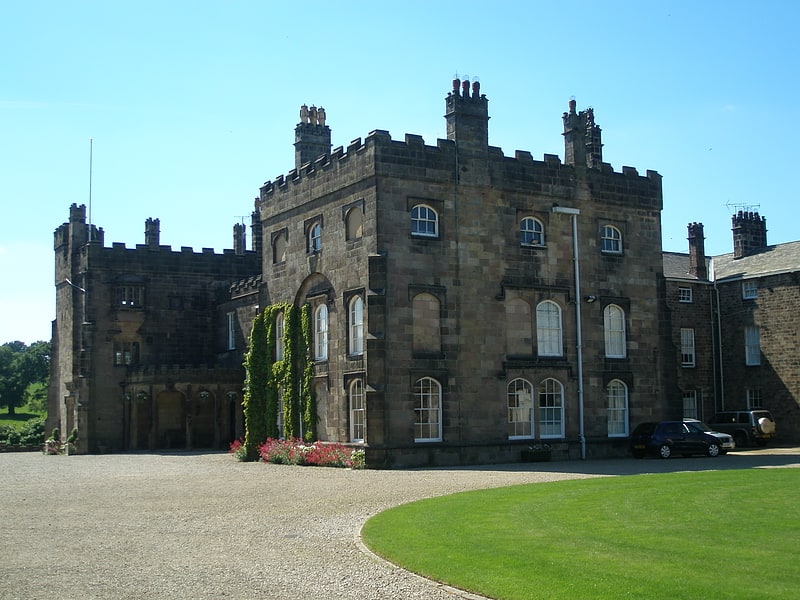
Castle in Ripley, England. Ripley Castle is a Grade I listed 14th-century country house in Ripley, North Yorkshire, England, 3 miles north of Harrogate.
The house is built of coursed squared gritstone and ashlar with grey slate and stone slate roofs. A central two-storey block is flanked by a tower at one end and a three-storey wing at the other. A gatehouse which stands some 260 feet (80 m) to the south of the main buildings is also Grade I listed, whilst the two weirs over Ripley Beck (and the bridges that straddle them) are grade II listed and the grounds and gardens are also listed at grade II.
The castle has been the seat of the Ingilby baronets for centuries.[3]
Address: Ripley, Harrogate HG3 3AY, Harrogate
Harrogate Theatre
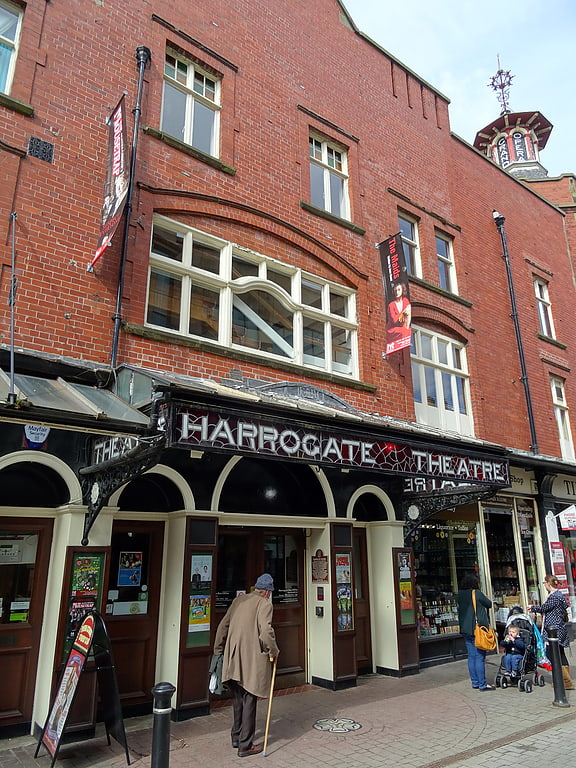
Harrogate Theatre is a Grade II listed performance hall and theatre, located in Harrogate, North Yorkshire, England. It is a full hemp house theatre that uses a theatrical rigging system to fly components like curtains, lights and scenery on and off the stage. Unusually, however, the theatre does not have stage doors in the usual way. Instead, personnel enter through the main entrance, then a raised set of barn doors at the back of the building is used for the load-in/load-out.
A brown plaque is displayed outside the theatre paying tribute to some of the famous performers who have appeared on Harrogate Theatre's stage, including Sarah Bernhardt, Charlie Chaplin, Steve Harley and Cockney Rebel, Steve Harley (as a 4-man acoustic set, not as part of Cockney Rebel), Andy Parsons, Trevor Howard, George Robey, Ellen Terry, Fats Waller, Ken Dodd, Ben Kingsley
and Eddie Izzard.[4]
Address: Oxford Street, Harrogate
The Stray
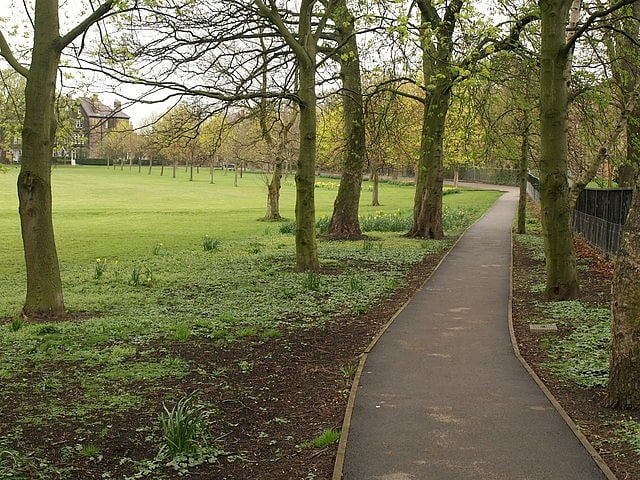
Park in Harrogate, England. The Stray is a long area of public parkland in the centre of Harrogate, North Yorkshire, England, comprising 200 acres of contiguous open land linking the spa town's curative springs and wells. The contiguous area of land, not all of which is officially designated part of The Stray, forms an approximately U-shaped belt from the Cenotaph on the north west point of the U, down the A61 road, along a broader southern belt of fields, enclosing the building of Church Square, and up to the north east tip of the U at The Granby. The Stray includes the site of Tewit Well, marked by a dome.[5]
Harrogate Baptist Church
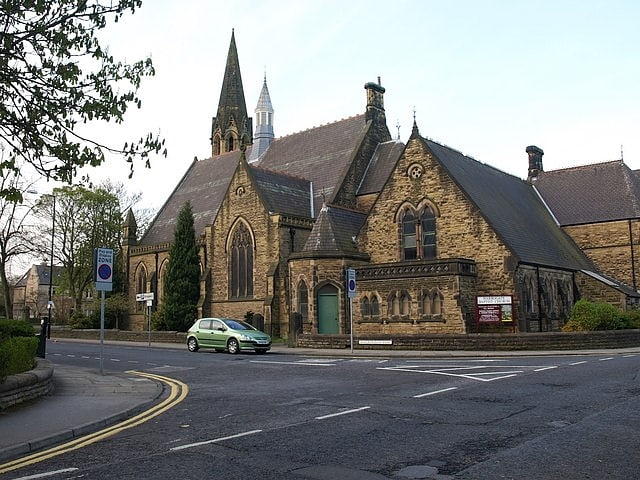
Baptist church in Harrogate, England. Harrogate Baptist Church is located on Victoria Avenue in Harrogate. It is a Grade II listed building.[6]
West Park United Reformed Church

West Park United Reformed Church is located in the West Park area of Harrogate, England, and is a Grade II listed building. It was designed in Nonconformist Gothic style as West Park Congregational Church by Lockwood & Mawson and completed in 1862 for around £5,000. Along with Belvedere Mansion across the road, it was intended as part of the prestigious entrance to the Victoria Park development. For the Congregationalists it was meant to house an increasing congregation of visitors brought to the spa town by the recently-built railways. It became a United Reformed church in 1972.
Its first minister was the much-loved Reverend John Henry Gavin who died in his prime of tuberculosis and had a big funeral in which many followed the coffin. Sir Francis Crossley laid the foundation stone, Thomas Raffles preached at the opening, and Tsarina Alexandra of Russia later worshipped there. The building has a large Binns pipe organ and the tower contains a single bell cast at Whitechapel Bell Foundry. The gargoyles on the tower have chicks carved on the nest-like capitals below them, and the south wall has twelve carved heads of historical characters, including Isaac Watts, John Bunyan, John Milton and Oliver Cromwell.[7]
St Robert's Church
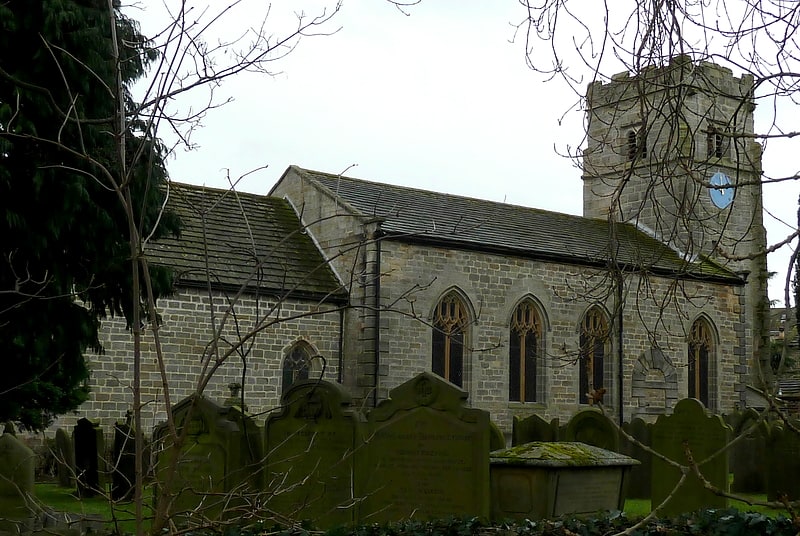
Church in Pannal, England. St Robert's Church, Pannal, North Yorkshire, England, also known as St Robert of Knaresborough Parish Church, is a Grade II* listed building. A 13th-century wooden church dedicated to St Michael was rebuilt in sandstone in the 14th century by monks of the Trinitarian Order from Knaresborough Priory. It was perhaps then that it was rededicated to Robert of Knaresborough. Its nave was rebuilt in the 18th century, restored in the 19th and remodelled in the 20th. Extensions were added in the 20th century. It is a parish church, and the vicar also serves the Church of St Michael and All Angels, Beckwithshaw.[8]
Address: 21 Crimple Meadows, HG3 1EL Harrogate
St Wilfrid's Church
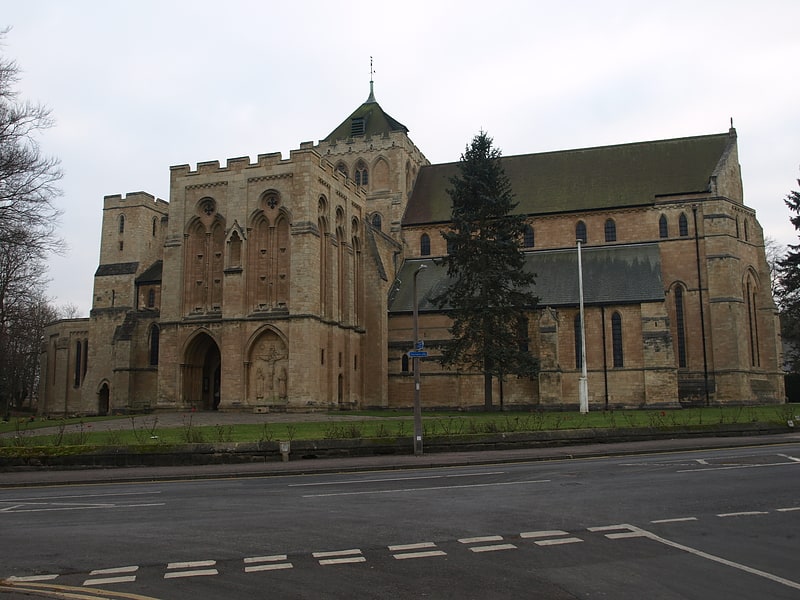
Parish church in Harrogate, England. St Wilfrid's Church, Harrogate is an Anglican parish church in the town of Harrogate, North Yorkshire, England. It is a Grade I listed building, the only such building in Harrogate. It was designed by the architect Temple Lushington Moore and is his most famous work. It is designated as a "Major Parish Church" and is the 38th largest parish church in England.[9]
Address: Duchy Rd, HG1 2EY Harrogate
Trinity Methodist Church

Methodist church in Harrogate, England. Trinity Methodist Church, Harrogate is located in Harrogate. It is a Grade II listed building.[10]
Address: Trinity Rd, HG2 9AU Harrogate
Church of St Thomas the Apostle
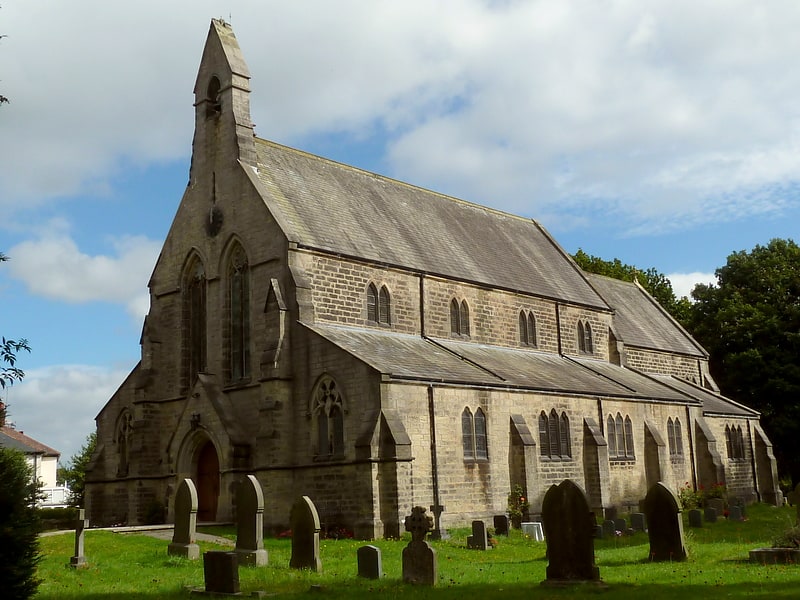
Parish church. The Church of St Thomas the Apostle, Killinghall, is an Anglican parish church in Killinghall, North Yorkshire, England. It was designed in 1879 by William Swinden Barber when the parish of Ripley was split to create the additional parish of Killinghall, and a new building was required to accommodate a growing congregation. It was opened in 1880. Among the early vicars posted in this benefice were two canons, Sydney Robert Elliston and Lindsay Shorland-Ball, and the Venerable Robert Collier, an Irish missionary who served in India and Africa.[11]